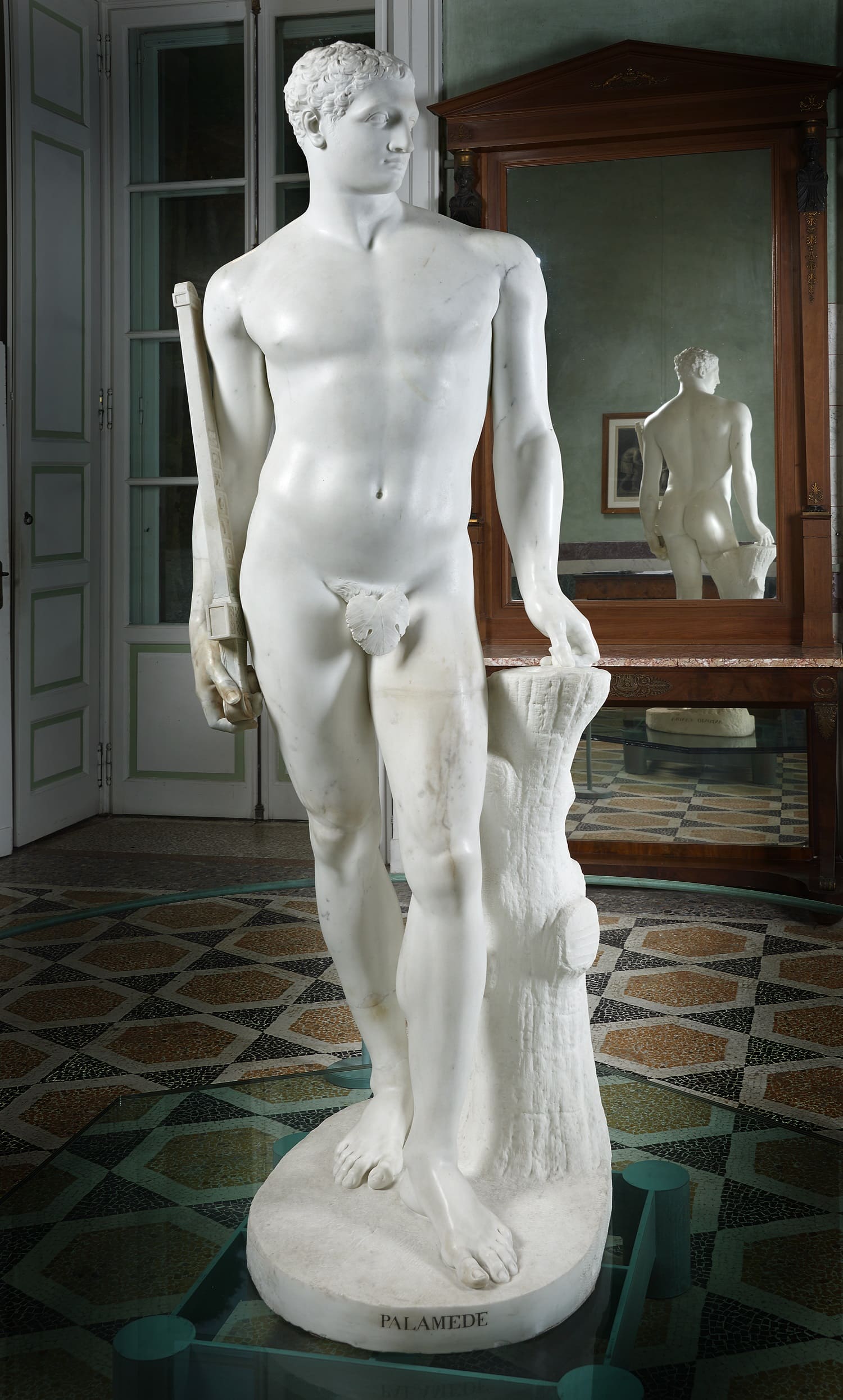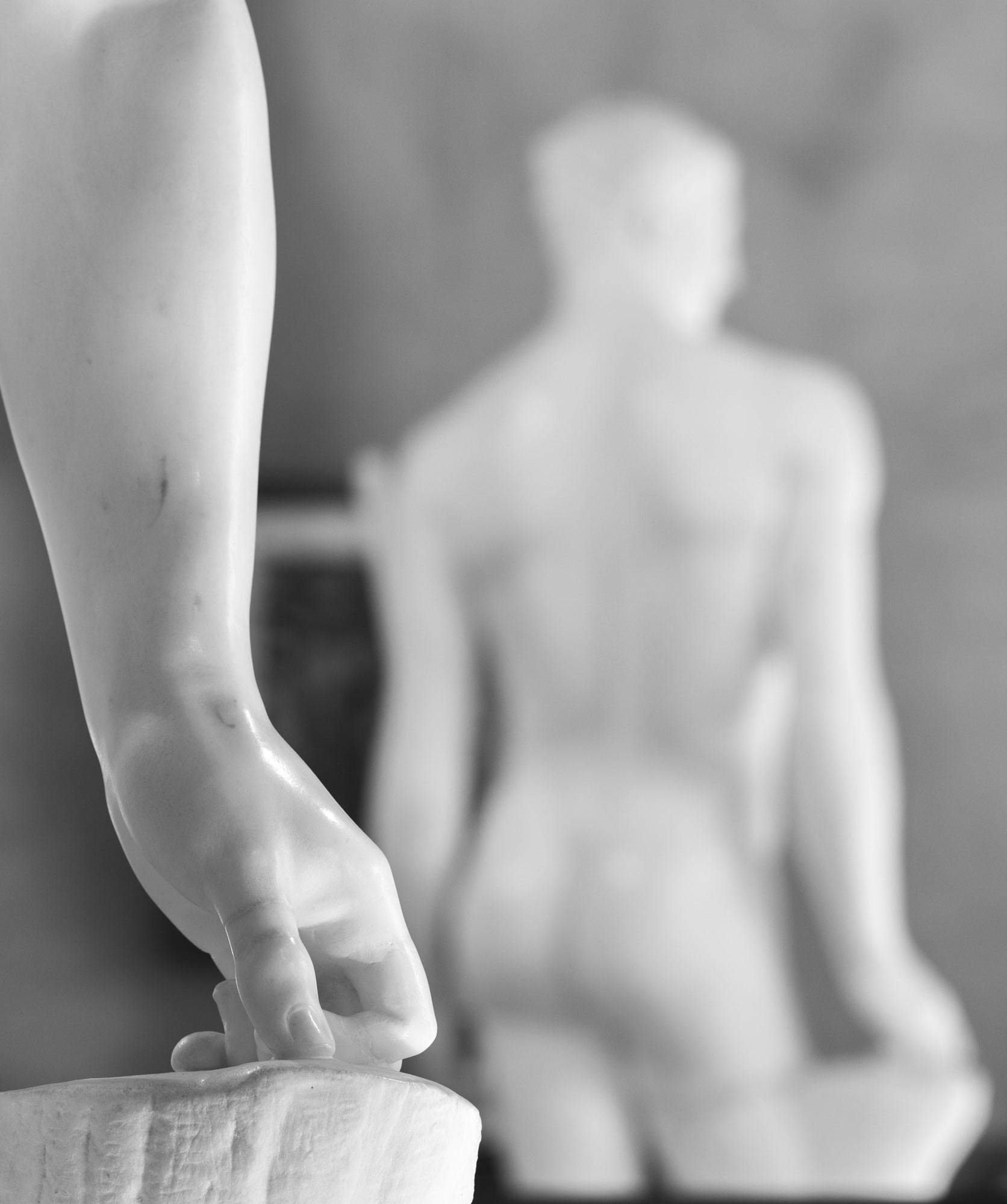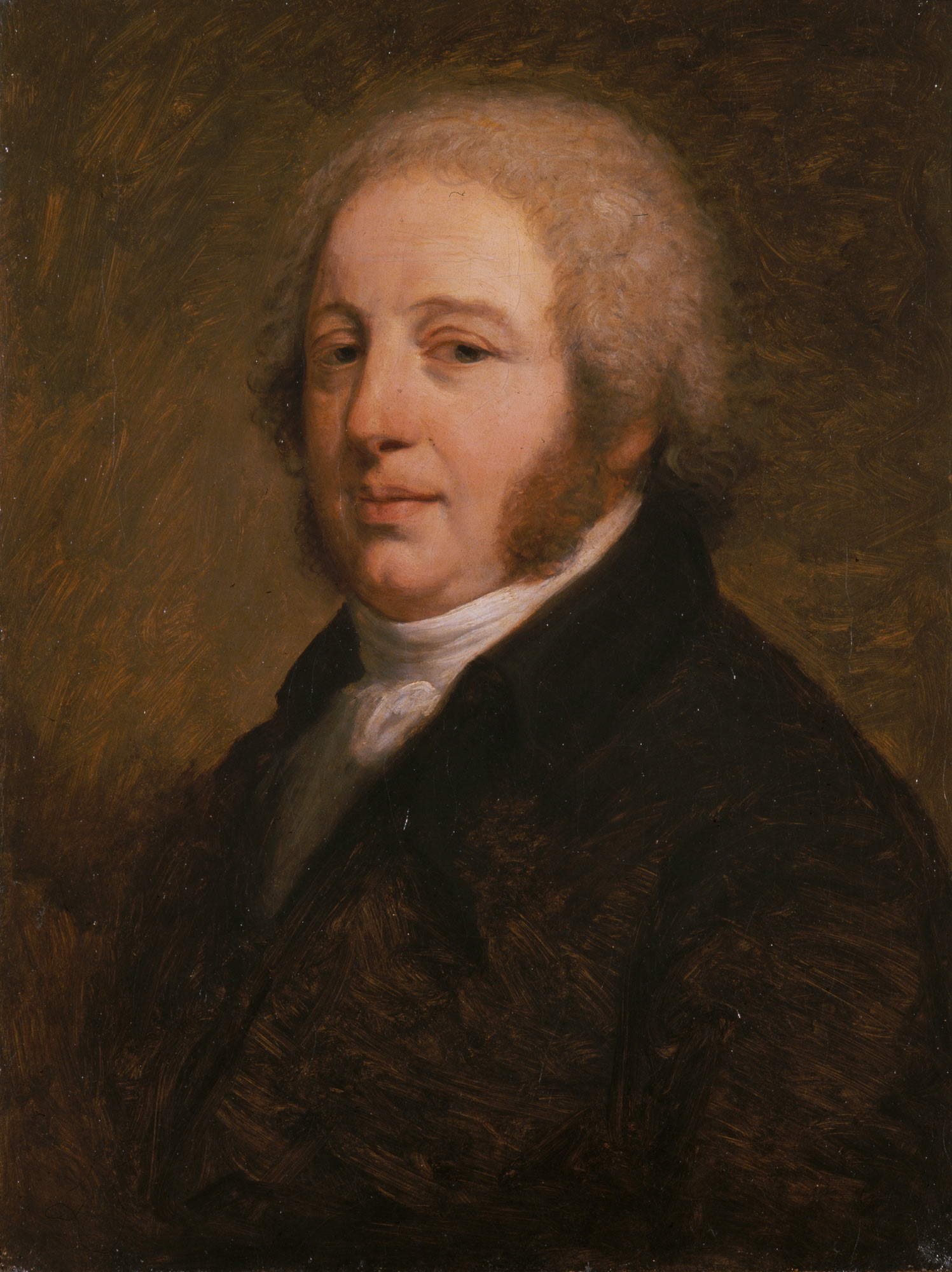On May 2, 1804, Antonio Canova wrote to Quatremère de Quincy: "I have lately finished the statue of Palamedes standing [...], the model of which had already been made for several years. Indeed at the time that I was modeling theHercules and Lica and some other figures of strong character I wanted to study that of a hero in his florid youth, as Philostratus describes him." Indeed, the immortal memory of Palamedes, the wisest of the Greek heroes who fought on the plain of Troy, does not belong to Homer. The greatness of the inventor of letters and chess (“the nightingale of the Muses who made no one suffer,” according to Euripides) is handed down by other writers up to Philostratus, who in the second century CE nostalgically evoked the shadows of those warriors among whom he stood out as the bearer of truth and knowledge, finally a victim of the intrigues of Odysseus who had him condemned to death.
“In height equal to Ajax [...], in beauty he competed with Achilles,” Palamedes is said to have “the largest eyes of all men” and to stand naked “halfway between a heavy and a light athlete.” In his perfect proportions (but which Leopoldo Cicognara had criticized for his “rather gentle” hips) one finds that aesthetic canon combining the classical model with the study of the real ’of nature,’ which Canova had been able to make contemporary. It was perhaps that reading that suggested to the sculptor to transform the figure of an athlete (the Discobolus, already fixed in an ink drawing and a plaster model around 1796) into the Greek leader “who loved wisdom and practiced it,” an example of an authentic and profound heroism with exceptional ingenuity.



According to Fernando Rigon Forte, Canova could not but have been “fascinated by a character whose existential and character traits-from the very etymology of the name, ’palm of the hand’-were punctually similar to his own [....]: from humble extraction to inventive ability, from intuitive intelligence to loyal generosity, from science to wisdom inspired by the highest ethical and aesthetic values.” Instead, the story would take on a new, fundamental meaning in the eyes of its buyer, that Giovanni Battista Sommariva who was the former owner of the present Villa Carlotta. Ambitious, wealthy, daring ’new man,’ he had quickly reached the top ranks of the Napoleonic administration, but just as abruptly was ousted from all positions, tainted by the accusation that he had won an astonishing fortune through unscrupulous economic speculation. Ready to play the slandered hero card, Sommariva had been well aware of the possibilities for symbolic reprojection of the Palamedes affair.
A story he probably knew well, since he was not only a patron of European breath (collector of Jacques-Louis David, Antonio Canova, Bertel Thorvaldsen), but also a refined bibliophile who boasted a collection of more than three thousand volumes and who could enjoy the friendship of distinguished literati, such as Vincenzo Monti, who dedicated to him a copy of one of Bodoni’s most luxurious editions.
Right next to his library would find a place for the masterpiece of his collection when it arrived in Tremezzo around 1819, marked by a ruinous fall in Canova’s studio and restored by the master himself, who refused to lower its price. From that unfortunate incident had sprung a correspondence (destined to become torrential) between the artist and his patron, an intense dialogue in which antiquarian culture and collecting passion, love of art and economic calculation were intertwined. Finally, a room in Villa Sommariva was set up with mirrors “of the first beauty and quality” to facilitate the total and simultaneous vision of the hero “in his florid youth,” omitted by Homer but made immortal by Canova.
Warning: the translation into English of the original Italian article was created using automatic tools. We undertake to review all articles, but we do not guarantee the total absence of inaccuracies in the translation due to the program. You can find the original by clicking on the ITA button. If you find any mistake,please contact us.